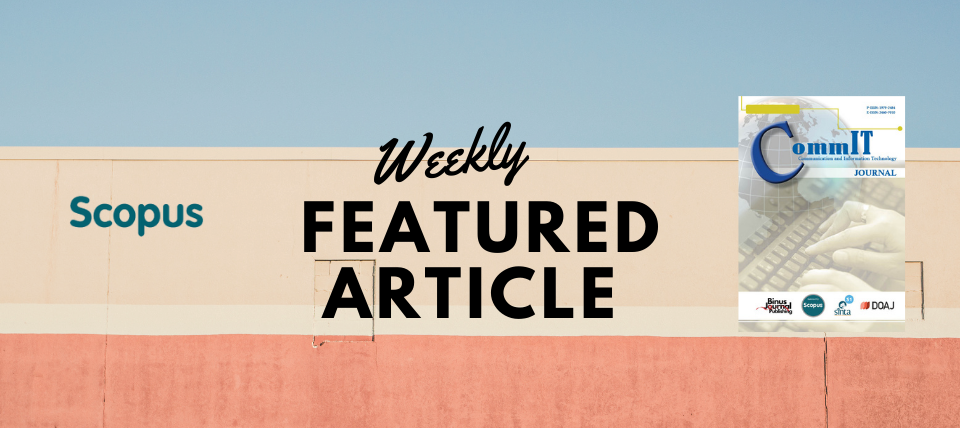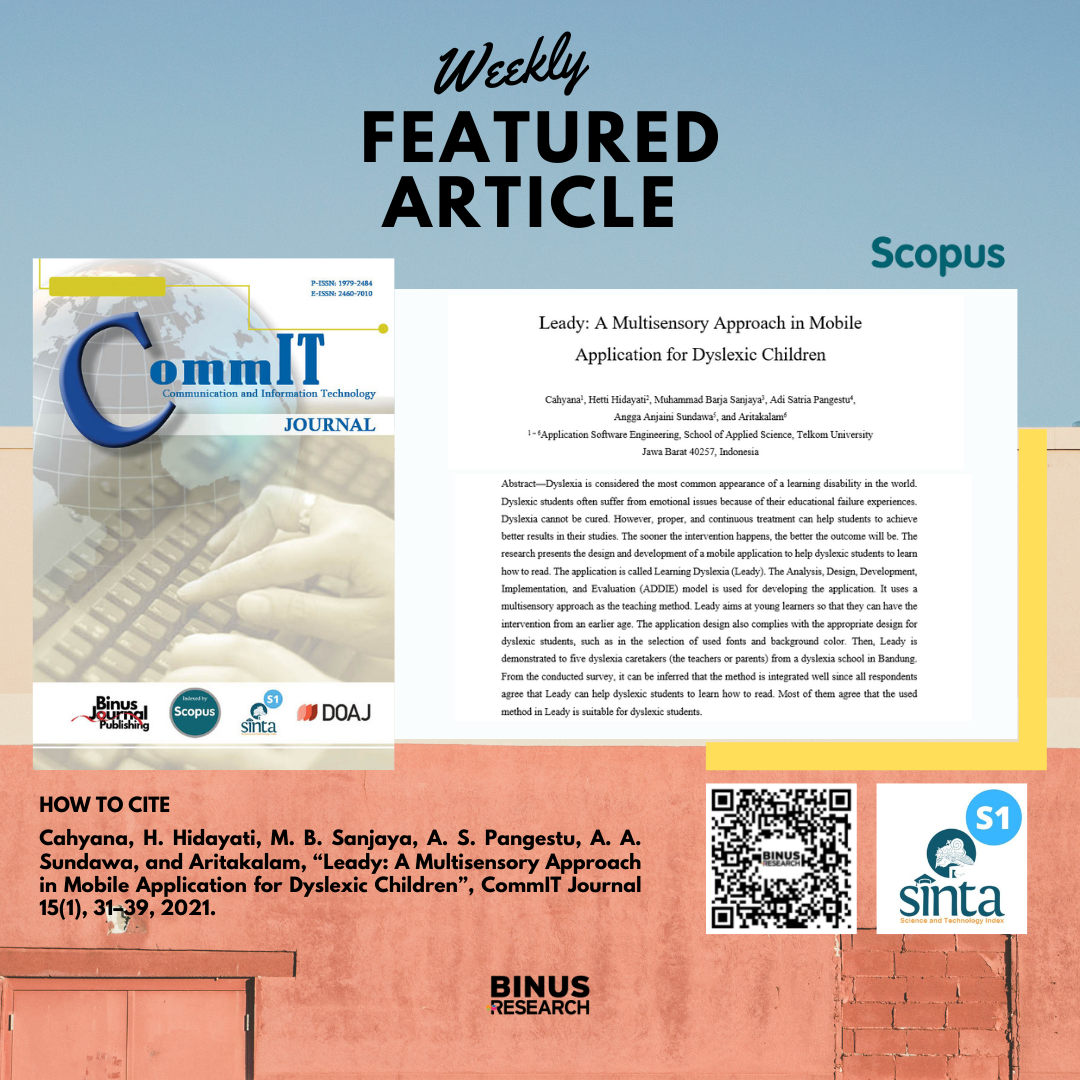Weekly Featured Article

Leady: A Multisensory Approach in Mobile Application for Dyslexic Children
Cahyana1, Hetti Hidayati2, Muhammad Barja Sanjaya3, Adi Satria Pangestu4, Angga Anjaini Sundawa5, and Aritakalam6
1 – 6Application Software Engineering, School of Applied Science, Telkom University, Jawa Barat 40257, Indonesia
Abstract—Dyslexia is considered the most common appearance of a learning disability in the world. Dyslexic students often suffer from emotional issues because of their educational failure experiences. Dyslexia cannot be cured. However, proper and continuous treatment can help students to achieve better results in their studies. The sooner the intervention happens, the better the outcome will be. The research presents the design and development of a mobile application to help dyslexic students to learn how to read. The application is called Learning Dyslexia (Leady). The Analysis, Design, Development, Implementation, and Evaluation (ADDIE) model is used for developing the application. It uses a multisensory approach as the teaching method. Leady aims at young learners so that they can have the intervention from an earlier age. The application design also complies with the appropriate design for dyslexic students, such as in the selection of used fonts and background color. Then, Leady is demonstrated to five dyslexia caretakers (the teachers or parents) from a dyslexia school in Bandung. From the conducted survey, it can be inferred that the method is integrated well since all respondents agree that Leady can help dyslexic students to learn how to read. Most of them agree that the used method in Leady is suitable for dyslexic students.
Scan the QR Code to read the article on website
https://journal.binus.ac.id/index.php/commit/issue/view/325
__________________________________
ᴅᴀᴛᴀ ᴀɴᴀʟʏᴛɪᴄ ᴀɴᴅ ᴘᴜʙʟɪᴄ ᴇɴɢᴀɢᴇᴍᴇɴᴛ
??? ?????
https://linktr.ee/binusresearch
#commITjournal #scopus #BINUSUNIVERSITY #BINUSIAN #BINUSRESEARCH #fosteringandempowering


